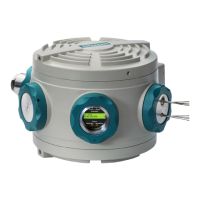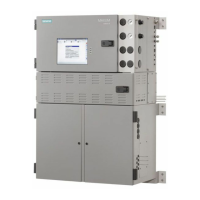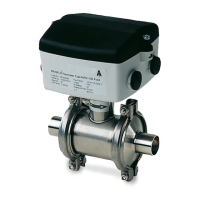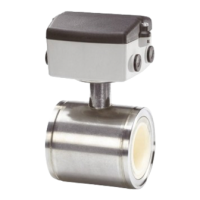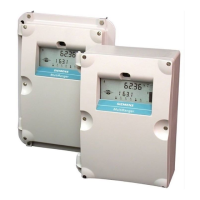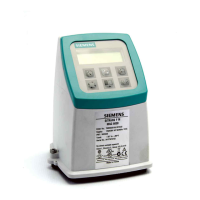Page 58 Milltronics SF 500 - INSTRUCTION MANUAL 7ML19985CN01
mmmmm
PID Control
Setup and Tuning
Before proceeding, it would be beneficial to qualify and quantify the terms you will
encounter in the setup and tuning of the control system.
Proportional Control (Gain), P
The P term adjusts the control output, based on the difference between the set point and
the measured flow rate. A higher P term increases the sensitivity of the SF 500 unit,
allowing it to react more quickly to changes or disturbances. If set too high, the SF 500
becomes less stable, and more susceptible to oscillations in the control output.
• allowable input range: 0.000 to 2.000
• typical operating range: 0.300 to 0.600
• default value: 0.400
The control output cannot reach the setpoint using only the P term. Since the P term acts
on the difference between the setpoint and process variable, a small difference between
these two always exists. The difference is never zero. A small P term can get the process
very close to set point, but this takes a long time. At minimum, an I term is required to
eliminate the offset created by the P term.
Integral Control (Automatic Reset), I
The I term on the SF 500 is used to increase or reduce the amount of control output to
eliminate the offset caused by the P term. The I term acts on the accumulation of the
error over small increments of time. As the process reaches setpoint and the error
becomes small, the effect of the I term decreases. A higher I term allows the SF 500 to
react to changes faster, but can also make it less stable.
• allowable input range: 0.000 to 2.000
• typical operating range: 0.100 to 0.300
• default value: 0.200
The P and I terms together can make a suitable control algorithm and for many
applications, they work fine. However, if faster response to changes is desired, it is
necessary to use larger P and I terms. Unfortunately, larger terms can make the system
unstable. A derivative term is needed to influence the control output as the process
variable approaches the set point.

